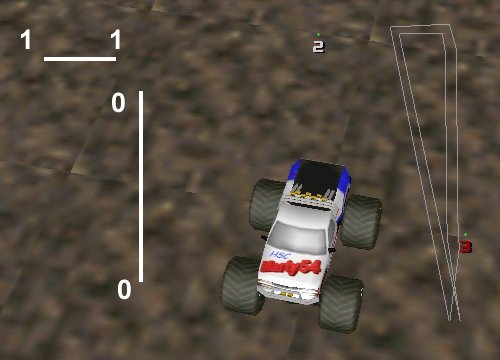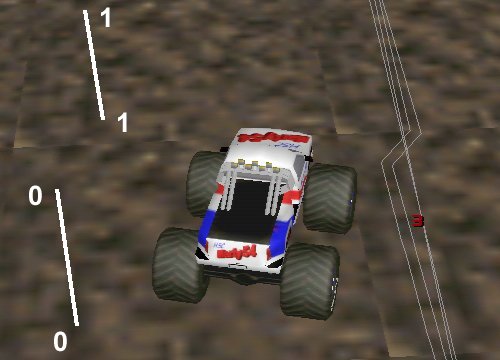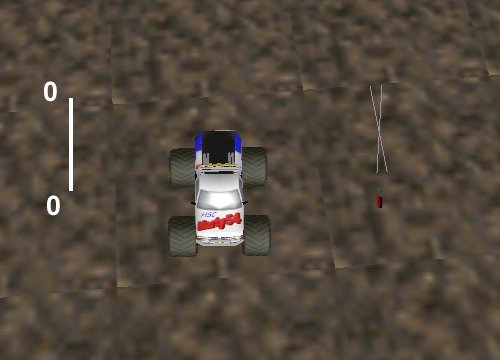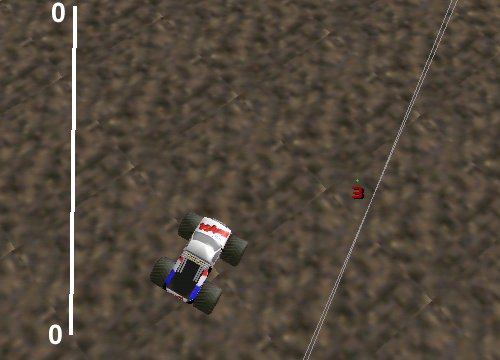
When you design a straight-a-way track, you'll encounter a few oddities with the map. Even though you can create a track that will cross over from one side of the terrain and begin again at the other, the map isn't nearly as flexible. The reason for this is that the game will try to connect the end of the last segment with the beginning of the first one - in order to form a complete circuit.
For example, I created a test track with the second course segment at a right angle to the first. My little sketch shows this, but the map in the game shows an odd shaped triangle with some pretty peculiar connections near the start. And worst of all, the computer trucks cannot follow the course back to the beginning. You will want to avoid this kind of arrangements.

For my next test, I went back to the idea that the course will span the entire terrain. This time, I tried to see what would happen when the game tries to connect the segments from one end of the terrain to the other. I split the middle so that the lines would not overlap each other. As you can see, the game just connects the end of the last segment with the beginning of the next - regardless of where they may be. The result is a stretched out skinny little map line. The trucks DO work here, but the map is as ugly as you could want.

For my next test, I used only one short little course segment. All that shows up on the map is an "x". Surprisingly, the trucks use this little course to go from one end of the terrain to the other. In an odd sort of way, the trucks follow the map. I did not try this on a bumpy terrain.

For my last test, I stretch the same little segment from one end to the other of the terrain. The trucks follow it, but that "x" pattern is still there.

In order for our expo to work, we will have to understand that not all maps will look perfect and if our straight-a-way idea is going to succeed in finding ways to make straights interesting, this is a detail that will have to be forgiven.
Please use the browser back button
to return to the previous page.